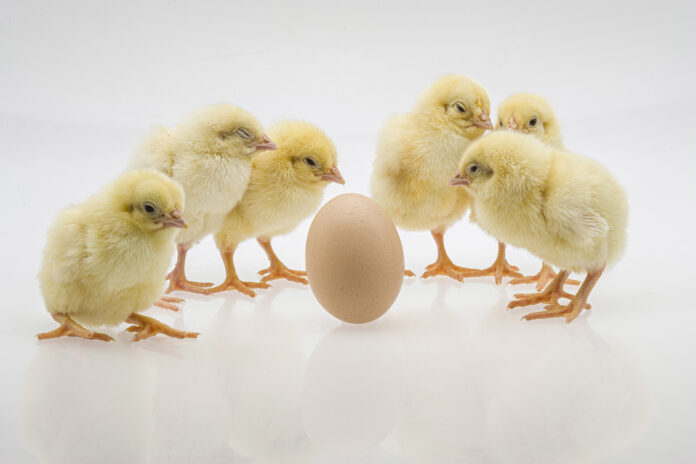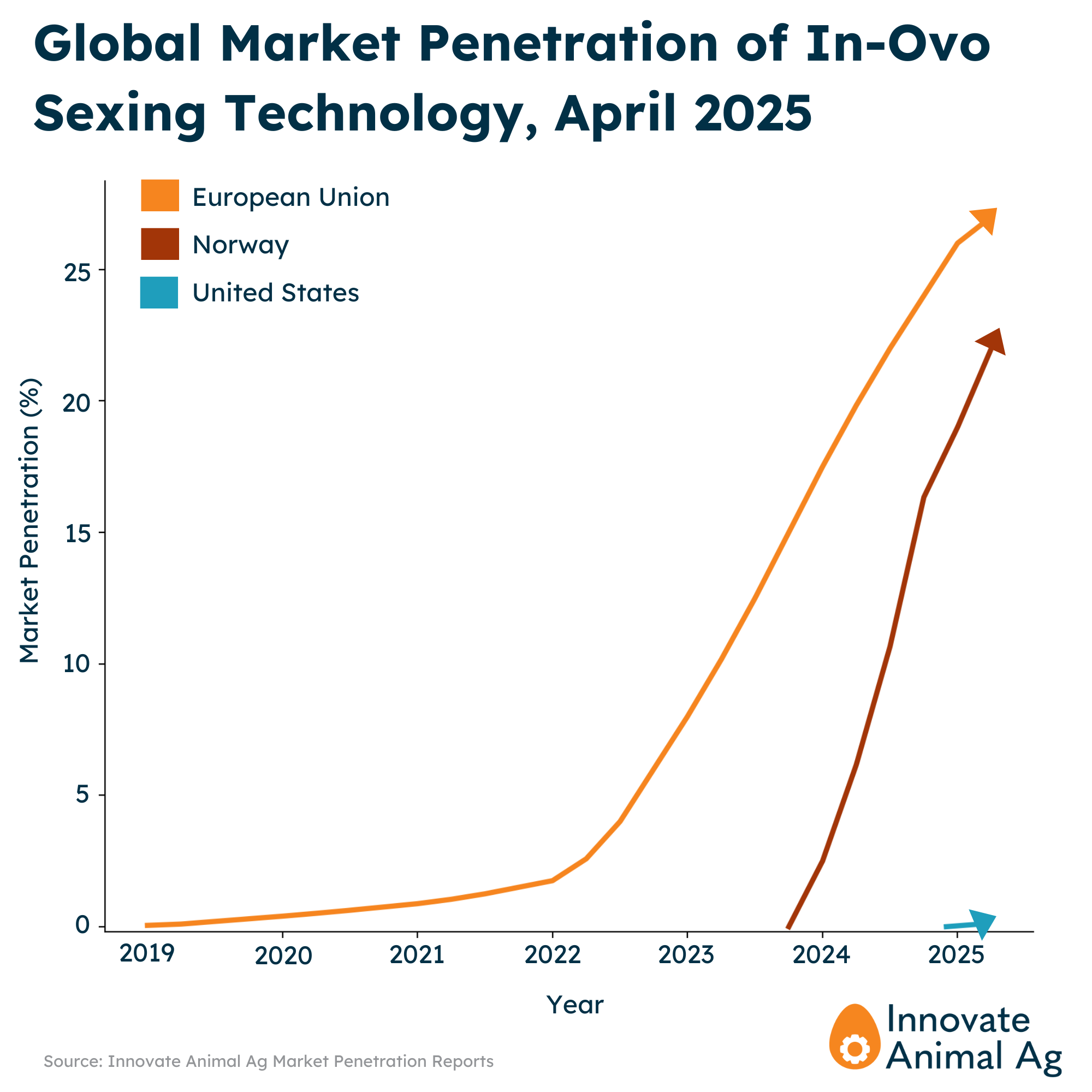
The rise of specialized layer genetics in the mid-20th century introduced a lasting challenge for egg producers: identifying and culling male chicks. This practice has long posed economic, operational, and ethical burdens across the sector. For the last few decades, the global egg industry has actively supported the development of a solution to this challenge. These efforts have now paid off.
Innovators in Europe and around the world have developed in-ovo sexing technology, a breakthrough that uses biotechnology to determine the sex of a chick embryo before hatching.
The technology unlocks efficiencies for hatcheries by reducing sexing labor, freeing up incubator space, and enabling technologies like in-ovo vaccination that were previously impracticable in layers due to the necessity of post-hatch sex sorting.
Current commercial status
In-ovo sexing has gained considerable global momentum over the last few years. Spurred initially by bans on the practice of male culling in Germany and France, the technology has now spread to markets without culling bans including the Netherlands, Norway, Switzerland, and the US. Since the technology’s first commercial runs in late 2018, over 400 million eggs have been sexed globally, yielding over 175 million female chicks.
The technology is now widespread in Europe. Original research by Innovate Animal Ag indicates that over 110 million of the 393 million head EU layer flock were sexed in-ovo, a 28% market penetration. In addition to the upcoming ban on chick culling in Italy in 2027, there is also discussion of EU-wide regulatory action on the topic.
The technology was also recently adopted in the US and Brazil and is now in the early stages of scaling up. The first eggs produced without culling are currently on sale by the egg producer NestFresh across the US. Additionally, the largest US retailer, Walmart, has included in-ovo sexing as a focus area for their egg suppliers, and the United Egg Producers has released an in-ovo sexing certification. In Brazil the egg producer Raiar Orgânicos pioneered the adoption of a machine because they believed their customers expect them to actively seek out the best market practices.
Europe’s success and the growing market-led adoption in the US and Brazil has caught the attention of many countries around the world. Over the coming years, the technology will likely continue its global expansion and proliferate to greenfield markets like Australia, Canada, the UK, and the rest of the European Union.

Technologies
Multiple approaches exist for egg sexing, with two broad approaches commercialized in Europe and the US.
Imaging-based technologies look “through” the eggshell to determine embryo sex. Two leading companies have rolled out this class of technology broadly: Agri Advanced Technologies produces their Cheggy machine, which uses hyperspectral imaging to detect embryonic feather color in brown sex-link breeds. The German company Orbem combines advanced AI with high-throughput MRI in their Genus Focus machine to detect the type of gonads in developing embryos.
A third company in this category, Omegga, is just beginning its commercial rollout. Omegga’s system uses specialized cameras installed directly inside the incubator to collect spectroscopic images over multiple days, eliminating the need to remove eggs for sexing.
Liquid-based analysis technologies involve making a tiny hole in the shell to sample allantoic fluid for chemical or biological analysis. The lead technology in this space is from Seleggt whose machine is widely deployed throughout Europe and is installed in one US hatchery.
Gene editing approaches remain in research and development. Companies like EggXYT, NextHen, and Hatched Genetics are developing genetic markers to identify male embryos prior to set or to influence the breeder to only lay females. These organizations are developing clever strategies where only male embryos carry edited traits, making female chicks and their eggs non-GMO. While requiring substantial upfront integration work, these approaches could potentially offer cheap and accurate sexing in the future.
Consumer benefits
Consumer research on in-ovo sexing generally shows that consumers have low awareness of chick culling, but once informed are extremely interested in seeing the technology implemented. One study of US consumers commissioned by Innovate Animal Ag found that 71% of egg buyers are willing to pay a price premium and around half would be willing to pay 5 cents extra per table egg, significantly more than the added cost of in-ovo sexing (generally less than one cent per table egg). Similar consumer research in Brazil and the UK shows that this willingness to pay is significant and steady across geographies.
Some egg producers, like NestFresh in the US, are leaning into this consumer demand. NestFresh sells their eggs under the branding “Humanely Hatched,” which offers consumers an intuitive, positive understanding of the welfare claims without having to use technical terms like “in-ovo sexing” or “culling.” This helps NestFresh and its retail partners differentiate themselves from competitors.
The future of in-ovo sexing
For decades, cost-effective and scalable in-ovo sexing has been a distant dream for our industry. The rapid and broad rollout of the technology in the last few years has made it clear that this dream is now a reality. Hatcheries and egg producers embracing this technology today are positioning themselves as industry leaders, futureproofing their supply chains and being rewarded by the ever-evolving consumer.
www.innovateanimalag.org | contact@innovateanimalag.org













